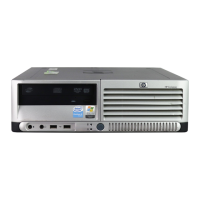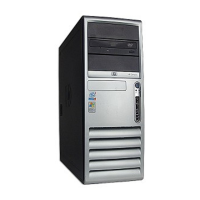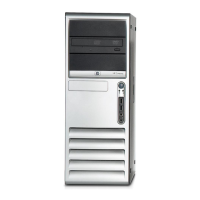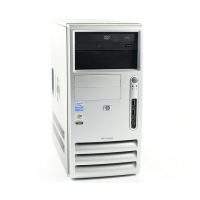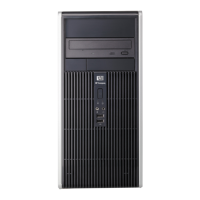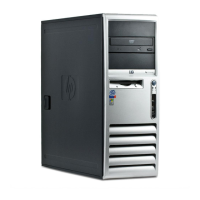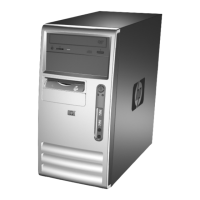Technical Reference Guide www.hp.com 6-3
Integrated Graphics Subsystem
The graphics controller integrated into the 82945G GMCH component includes 2D and 3D
accelerator engines working with a deeply-pipelined pre-processor. Hardware cursor and overlay
generators are also included as well as a legacy VGA processor core. The IGC supports three
display devices:
■
One progressive-scan analog monitor
■
Up to two additional video displays with the installation of an optional Advanced Digital
Display (ADD2) card in the PCI Express x16 graphics slot.
✎
The IGC can support LVDS, TMDS, or TV output with the proper encoder option.
Special features of the integrated graphics controller include:
■
400-MHz core engine
■
400-MHz 24-bit RAMDAC
■
2D engine supporting GDI+ and alpha stretch blithering up to 2046 x 1536 w/32-bit color @
85 Hz refresh (QVGA)
■
3D engine supporting Z-bias and up to 1600 x 1200 w/32-bit color @ 85 hz refresh
■
Video DVD support:
The Intel graphics controller uses a portion of system memory for instructions, textures, and
frame (display) buffering. Using a process called Dynamic Video Memory Technology (DVMT),
the controller dynamically allocates display and texture memory amounts according to the needs
of the application running on the system.
The IGC does not have local memory at its disposal but instead uses a portion of system memory
allocated for frame buffering and texturing. The total memory allocation is determined by the
amount of system memory installed in a system. The video BIOS pre-allocates 8 megabytes of
memory during POST. System memory that is pre-allocated is not seen by the operating system,
which will report the total amount of memory installed less the amount of pre-allocated memory.
Example: A system with 128 MB of SDRAM with the video BIOS set to 8 MB will be reported
by MS Windows as having 120 MB.
The IGC will use, in standard VGA/SVGA modes, pre-allocated memory as a true dedicated
frame buffer. If the system boots with the OS loading the IGC Extreme Graphics drivers, the
pre-allocated memory will then be re-claimed by the drivers and may or may not be used by the
IGC in the “extended” graphic modes. However, it is important to note that pre-allocated
memory is available only to the IGC, not to the OS.
The 945G's DVMT function is an enhancement over the Unified Memory Architecture (UMA)
of earlier copyists. The DVMT of the 945G selects, during the boot process, the maximum
graphics memory allocation possible according on the amount of system memory installed:
The actual amount of system memory used by the IGC (in the “extended” or “extreme” modes)
will increase and decrease dynamically according to the needs of the graphics application. The
amount of memory used solely for graphics (video) may be reported in a message on the screen,
depending on the operating system and/or applications running on the machine.
SDRAM Installed Maximum Memory Allocation
128 to 256 megabytes 8-32 MB
257 to 511 megabytes 8-64 MB
> 512megabytes 8-128 MB
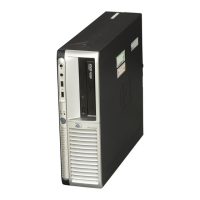
